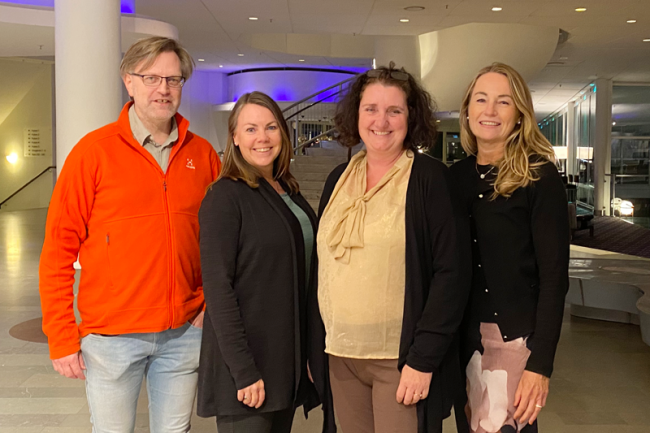Research project wants to create sustainable rural ecosystems through place design
2025-05-12- With this project, we want to help lay the foundation for an ecosystem that supports collaboration between industries and sectors. The objective is to create synergies and boost the competitive edge of the companies and the appeal of rural locations, says Lotta Braunerhielm, docent in Human Geography at Karlstad University.
Lotta Braunerhielm, please tell us about the project
- In this project, we look at challenges such as skills supply or resource utilisation in rural places that are, for instance, characterised by seasonal variations or where employers struggle to fill vacant positions. The purpose of the project is to create synergies between industries and sectors, like the hospitality business and the forest or engineering industry, through collaboration within a sustainable rural ecosystem. The ambition is to create a new perspective on resource utilisation and skills supply that will eventually make rural companies and places more competitive and appealing.
- We will look at challenges such as skills supply or resource utilisation in rural locations that are, for instance, characterised by seasonal variations or where employers struggle to fill vacant positions. Our premise is that rural areas are an arena for a combination of work and leisure, which means that they are ripe with various skills, entrepreneurs and other people with considerable resources from both urban and rural places. This combination can help pave the way for development in the countryside.
In partnership with industry and hospitality companies, the project wants to develop and revitalise rural places through the method of place design. The purpose is to create synergies between industries and sectors and help create a new perspective on resource utilisation and skills supply that will eventually make rural companies and places more competitive and appealing.
What is “place design”, and how does it work?
- Place design is an approach and method that considers the complexity of tourism and place development. It is based on a combination of the design process and a research method called Participatory Action Research, or PAR. The premise of the method, which we have developed in several different research projects, is to use a location’s unique features, meaning its resources in terms of nature, culture and history, and to involve the people who live, work and visit there in the development processes. We then add digital layers that can, for example, facilitate interactions between people, such as business owners and visitors. A key principle is to create harmony between people, technology and place. The actual design process is crucial in the creation of appealing places as well as local forces at those locations to bolster both the people and the place - a “Platskraft".
Why is a project like this important, and how can it contribute to society?
- Helping change the perspective on how manufacturing industries and tourism companies are beneficial for each other and thereby boosting the competitive edge for local businesses is important both to the partners involved and to the private sector in general. Overcoming challenges through multifunctional solutions is important to the companies involved and to the places where they are based.
As an example - how can Volvo CE in Arvika, which attracts so-called technical visits, help extend the visit or generate interest in coming back to visit the town again?
- Through their involvement in the project, the companies demonstrate a sense of social responsibility and serve as ambassadors for the countryside while also boosting the appeal of the place itself, for instance through extending visits or inspiring new trips to the area. The companies have stated that the rewards they can identify through their project participation are advantages for the company, synergies and networks with other companies and other industries or sectors, and also benefits for their industry at large.
The Platskraft Method
Platskraft offers a research-based method for sustainable development that takes into account the unique needs and strengths of the place. By involving the local community, including residents, businesses, and associations, in the process, it ensures that development occurs in harmony with people and the place. The method is based on reflection on why, what, and how development should take place, and includes both digital solutions and traditional methods to achieve sustainable goals. Platskraft is also a process where learning is embedded. Each step consists of analyses of the place and insights that take participants to the next step and increased knowledge and understanding of their local community, as well as contributing to local ownership. Platskraft thus promotes a democratic and fair approach where different groups in society are represented, leading to solutions that reflect those who live, work, and visit the place.
People involved in the project
Lotta Braunerhielm, Laila Gibson, Pernille K Andersson, Håkan Liljegren and Charlotta Andersson will be involved in the project, which is housed at the Department of Geography, Media and Communication but has representation from Geomedia, the Centre for Research on Sustainable Societal Transformation (CRS), the Service Research Center (CTF), and DAMI at Karlstad University.


